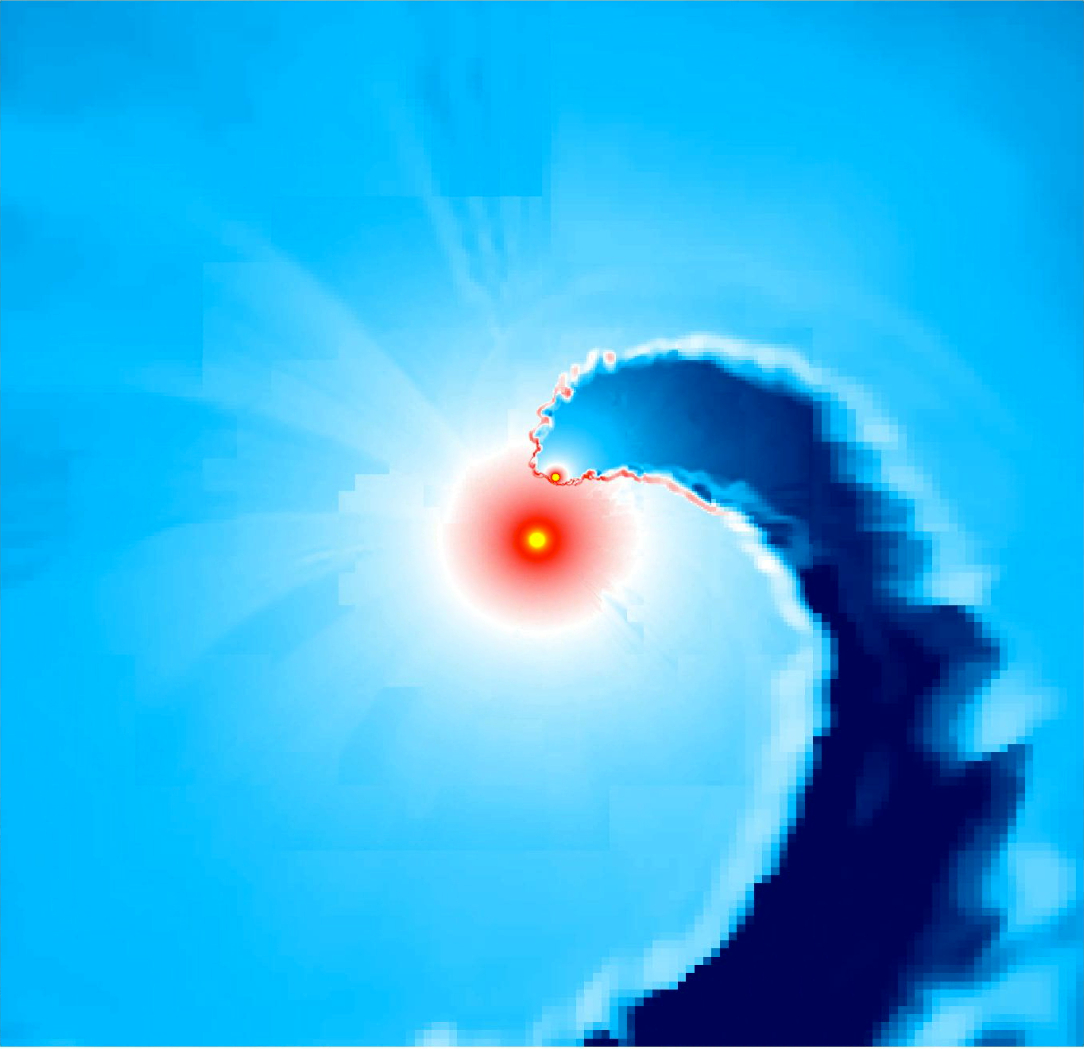
 Credit: Australian National Univ./E. R. Parkin and Univ. of Liege/E. Gosset
Credit: Australian National Univ./E. R. Parkin and Univ. of Liege/E. Gosset
Dance of the Veiled Stars
Some of the most interesting stars live in exclusive, hidden regions. Such is the case of the group of stars known as Cygnus OB2, an association of about 3000 stars, about 100 of which are amongst the most massive and extreme normal stars known. Astronomers are intensely interested in studying these rare massive stars, but unfortunately Cyg OB2 lives in a rather dirty region of the Galaxy, at least as seen from earth, with huge intervening clouds of dust hiding important information from the view of earth-bound astronomers. But many of these stars are X-ray sources, and X-rays can penetrate vast amounts of dust and other debris to reveal important hidden physical details. One particular denizen of this region, a star known as Cyg OB2 #9, was one of the first massive stars discovered to emit X-rays. For more than 30 years the reason why Cyg OB2 #9 emitted X-rays was a mystery. Now, astronomers using a fleet of X-ray satellite observatories, like Swift, and XMM-Newton, along with ground-based radio telescopes, have solved the mystery. It turns out that Cygnus OB2 #9 is leading a double life - it's not a single star at all, but a binary system with a massive companion star. Both stars possess strong stellar winds, and these winds collide as the two stars dance in their eccentric, 660-day orbit. This powerful collision produces gas at temperatures of millions of degrees, hot enough to produce X-ray emission. Not only that, but this X-ray emission varies in an understandable way as the stars orbit each other. Astronomers have been able to model this system now in some detail, thanks to these new observations. A computer simulation of the wind collsion between the stellar components of Cyg OB2 #9, showing a "bow shock" around the less massive star, is shown above.
Published: October 22, 2012
<
HEA Dictionary ● Archive
● Search HEAPOW
● Other Languages
● HEAPOW on Facebook
● Download all Images
● Education ● HEAD
>

Each week the HEASARC
brings you new, exciting and beautiful images from X-ray and Gamma ray
astronomy. Check back each week and be sure to check out the HEAPOW archive!
Last modified Tuesday, 27-Feb-2024 10:10:02 EST


